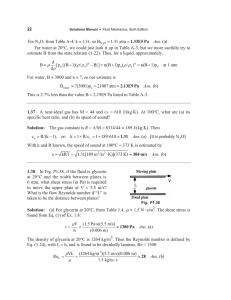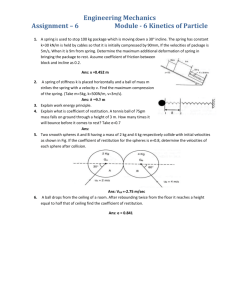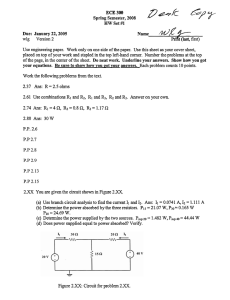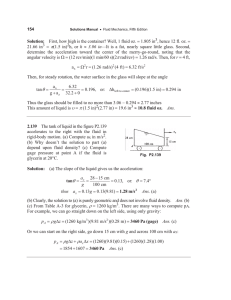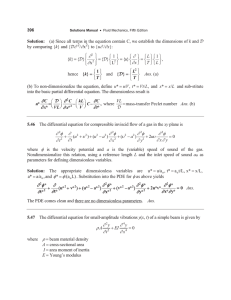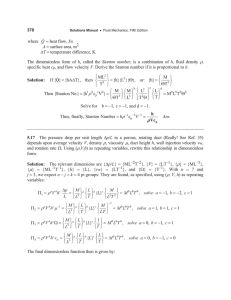Dimensional Analysis & Similarity: Chapter Excerpt
advertisement
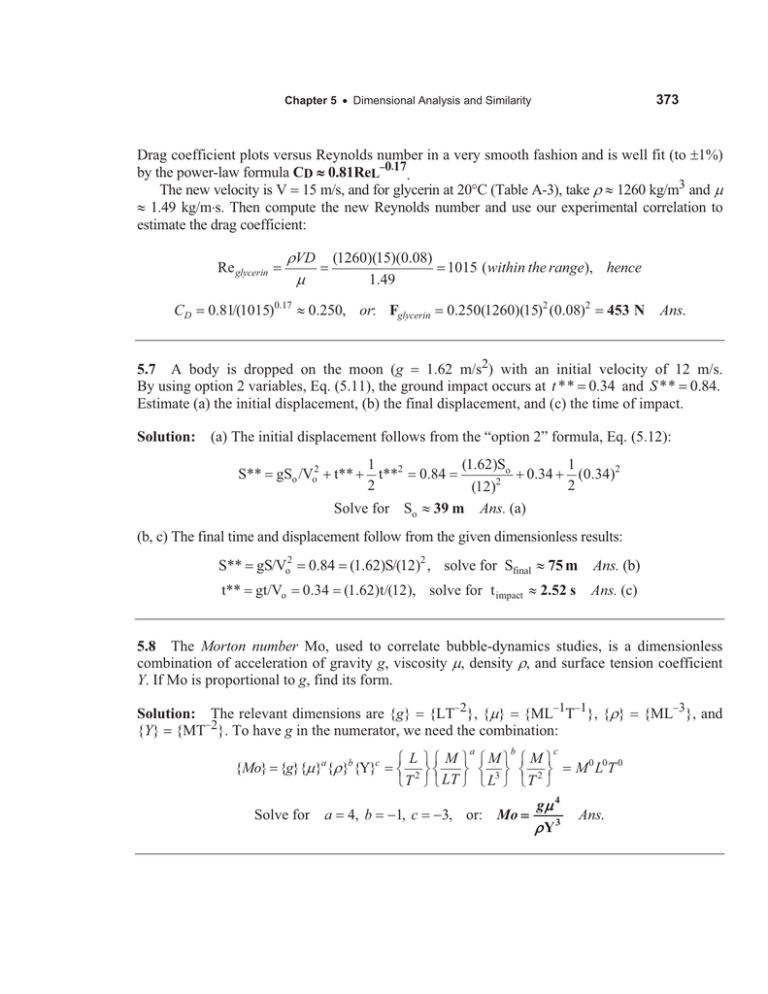
373
Chapter 5 x Dimensional Analysis and Similarity
Drag coefficient plots versus Reynolds number in a very smooth fashion and is well fit (to r1%)
by the power-law formula CD | 0.81ReL0.17.
The new velocity is V 15 m/s, and for glycerin at 20qC (Table A-3), take U | 1260 kg/m3 and P
| 1.49 kg/ms. Then compute the new Reynolds number and use our experimental correlation to
estimate the drag coefficient:
Re glycerin
CD
UVD
P
(1260)(15)(0.08)
1015 (within the range), hence
1.49
0.81/(1015)0.17 | 0.250, or: Fglycerin
453 N
0.250(1260)(15)2 (0.08)2
Ans.
5.7 A body is dropped on the moon (g
1.62 m/s2) with an initial velocity of 12 m/s.
By using option 2 variables, Eq. (5.11), the ground impact occurs at t ** 0.34 and S ** 0.84.
Estimate (a) the initial displacement, (b) the final displacement, and (c) the time of impact.
Solution: (a) The initial displacement follows from the “option 2” formula, Eq. (5.12):
(1.62)So
1
0.34 (0.34)2
2
2
(12)
Solve for So | 39 m Ans. (a)
1
S** gSo /Vo2 t** t**2
2
0.84
(b, c) The final time and displacement follow from the given dimensionless results:
S** gS/Vo2
t** gt/Vo
0.84 (1.62)S/(12)2 , solve for Sfinal | 75 m Ans. (b)
0.34
(1.62)t/(12), solve for t impact | 2.52 s
Ans. (c)
5.8 The Morton number Mo, used to correlate bubble-dynamics studies, is a dimensionless
combination of acceleration of gravity g, viscosity P, density U, and surface tension coefficient
Y. If Mo is proportional to g, find its form.
Solution: The relevant dimensions are {g} {LT2}, {P} {ML1T1}, {U}
{Y} {MT2}. To have g in the numerator, we need the combination:
{Mo} {g}{P}a {U}b{Y}c
Solve for a
4, b
a
b
­ L ½­ M ½ ­M ½ ­ M ½
® 2 ¾® ¾ ® 3 ¾ ® 2 ¾
¯ T ¿ ¯ LT ¿ ¯ L ¿ ¯ T ¿
1, c
3, or: Mo
c
gP 4
UY3
M 0 L0T 0
Ans.
{ML3}, and

